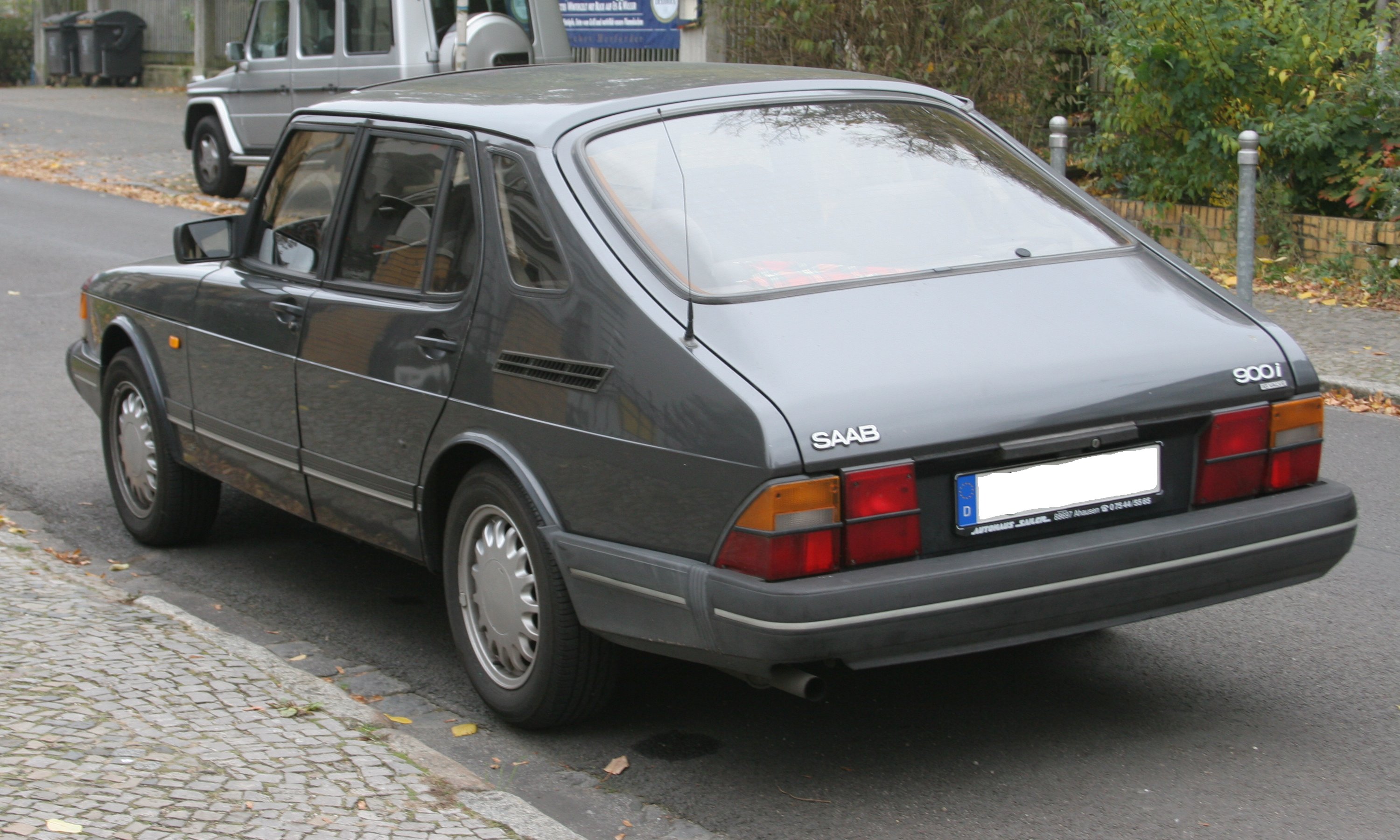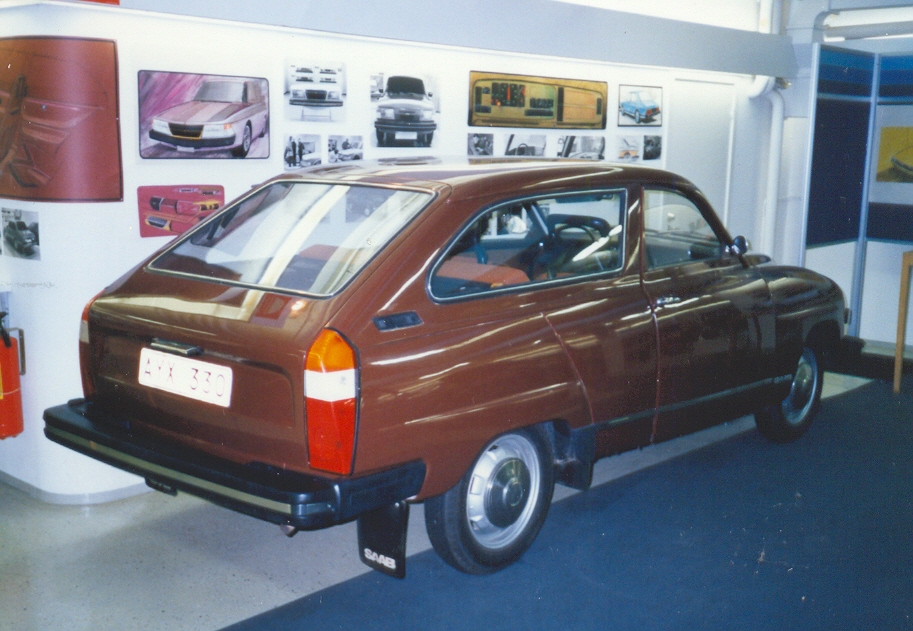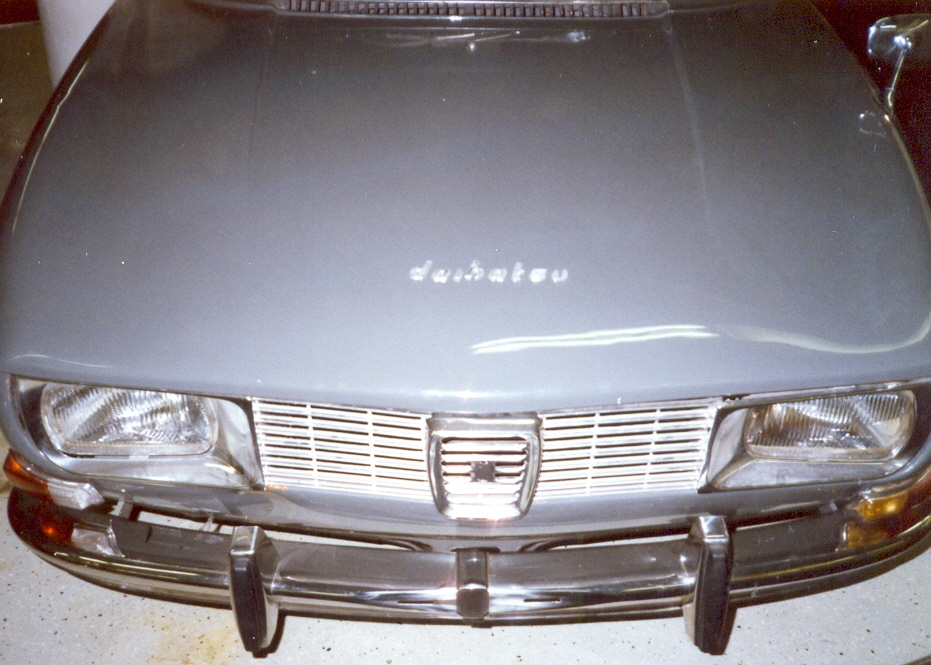|
Saab 98
The Saab 98 was an automobile built by Saab Automobile, Saab in 1974 which never reached full production. Originally it was called X14, designed by Björn Envall as a combi coupé based on the Saab 95 and using its floorpan. The prototype was assembled by Sergio Coggiola, who had already done work on the Saab Sonett III. Only a handful of test cars were built up to 1976 before the project was abandoned when Saab decided there was no room in the market for a car between the Saab 95 and Saab 99. The only surviving 98, Vehicle registration plates of Sweden, licence plate (Swedish) AYX 330, started its life as a white Saab 95 registered on 7 September 1973. It is currently painted 'Siena Brown' and on display in the Saab Museum in Trollhättan. Notes External links Dennis' SAAB garage {{Saab Automobile Saab concept vehicles, 98 Front-wheel-drive vehicles ... [...More Info...] [...Related Items...] OR: [Wikipedia] [Google] [Baidu] |
Saab Automobile
Saab Automobile AB () is a defunct automotive industry, car manufacturer that was founded in Sweden in 1945 when its parent company, Saab AB, began a project to design a small automobile. The first production model, the Saab 92, was launched in 1949. In 1968 the parent company merged with Scania-Vabis, and ten years later the Saab 900 was launched, in time becoming Saab's best-selling model. In the mid-1980s the new Saab 9000 model also appeared. In 1989, the automobile division of Saab-Scania was restructured into an independent company, Saab Automobile AB. The American manufacturer General Motors (GM) took 50 percent ownership. Two well-known models to come out of this period were the Saab 9-3 and the Saab 9-5. Then in 2000, GM exercised its option to acquire the remaining 50 percent. In 2010 GM sold Saab Automobile AB to the Dutch automobile manufacturer Spyker Cars N.V. After many years establishing a sound engineering reputation and ultimately a luxury car, luxury price t ... [...More Info...] [...Related Items...] OR: [Wikipedia] [Google] [Baidu] |
Björn Envall
Björn Envall (born 1942), is a Swedish retired automobile designer. He was head of the design department at Saab. He started his career in the 1960s at Saab as an apprentice under Sixten Sason, especially helping with the design of the Saab 99 and the ill-fated Saab Catherina sports car. In fact, after the failure of that design to be accepted by Saab, he designed (on paper only) a further and progressive two-seater, which was never built. After a two years spell at Opel he took over Sason's work at Saab, in 1969, following Sason's death. He held this position until 1992. Among his designs there was the Saab EV-1, Saab 98, the Saab 99 Combi Coupé, the Saab 900 and the Saab 900 convertible. He also guided the co-operation project with Fiat, that led to the Saab 9000. He made the original drawings of the 'new generation' Saab 900, in 1988, before the involvement of General Motors The General Motors Company (GM) is an American Multinational corporation, multinational Automoti ... [...More Info...] [...Related Items...] OR: [Wikipedia] [Google] [Baidu] |
Combi Coupé
Combi coupé is a marketing term used by Saab to describe cars with a sloping coupé-like rear hatchback. The term joins the European term "combi" (for an estate car / station wagon) with coupé. The design combines the functionality of a hatchback with the appearance of a fastback. As per a hatchback, the combi coupé incorporates a shared passenger and cargo space. Origin The term was coined by Björn Envall and first introduced with the 1974 Saab 99. Saab also discussed making a hatchback available for the Saab 96/Saab 95 model range and Envall created the prototype Saab 98. The "Combi coupé" term was later applied to the Saab 900 model line-up. Volvo also made a prototype combi coupé. File:1978 Saab 99 3-door (US), front right.jpg , Saab 99 - front File:1978 Saab 99 3 door, rear left.jpg , Saab 99 - rear Modern examples At the 2010 Paris Motor Show, Saab showed models that indicated that the Saab 9-3 The Saab 9-3 (pronounced ''nine-three'') is a compact exe ... [...More Info...] [...Related Items...] OR: [Wikipedia] [Google] [Baidu] |
Saab 95
The Saab 95 is a seven-seater, two-door station wagon which was produced by Saab from 1959 to 1978. Initially it was based on the Saab 93 sedan, but the model's development throughout the years followed closely that of the Saab 96 after the 93 was taken off the market in 1960. It was introduced in 1959, but because only 40 were made in 1959, production is often said to have started in 1960. The first engine was an 841 cc three-cylinder two-stroke, but from 1967 onward, it became available with the same four-stroke Ford Taunus V4 engine as used in the Saab 96, the Saab Sonett V4 and Sonett III, and the German Ford Taunus. It had a four-speed manual transmission. There was a small handle on the firewall that, when pushed, put the car into a "freewheeling" mode. This allowed the driver to coast downhill without seizing the two-stroke engine, but when power was needed the transmission would engage and the driver could power the car up hill again. As the 95 received the four-sp ... [...More Info...] [...Related Items...] OR: [Wikipedia] [Google] [Baidu] |
Prototype
A prototype is an early sample, model, or release of a product built to test a concept or process. It is a term used in a variety of contexts, including semantics, design, electronics, and Software prototyping, software programming. A prototype is generally used to evaluate a new design to enhance precision by system analysts and users. Prototyping serves to provide specifications for a real, working system rather than a theoretical one. In some design workflow models, creating a prototype (a process sometimes called materialization) is the step between the Formal specification, formalization and the evaluation of an idea. A prototype can also mean a typical example of something such as in the use of the derivation 'prototypical'. This is a useful term in identifying objects, behaviours and concepts which are considered the accepted norm and is analogous with terms such as stereotypes and archetypes. The word ''wikt:prototype, prototype'' derives from the Greek language, Greek ... [...More Info...] [...Related Items...] OR: [Wikipedia] [Google] [Baidu] |
Sergio Coggiola
Sergio Coggiola (1928-1989) was an Italian designer known primarily for his automotive work at Carrozzeria Ghia in Turin for 15 years — serving as the head of Ghia's prototype shop until 1952 — and later at his own company, Carrozziere Coggiola, which he founded in 1966 in Orbassano, Italy, a commune of Turin. In the 1980s, Coggiola freelanced for car manufacturers, sometimes executing third-party designs, such as Trevor Fiores design of the concept car Citroën Karin, the Lamborghini Portofino or prototypes of the Renault Mégane. Coggiola also produced individual vehicles, special ordered by customers as one-off cars, including Bentley B2 and B3 coupes and convertibles, which Pininfarina had designed for the Sultan of Brunei — Coggiola making a total of 17 copies of this model from 1994 to 1996. Other original work included the asymmetrically designed Coggiola Janus (1978), the Fiat Punto Surf pick-up study and the 2000 Coggiola T-Rex, a SUV that used a Humme ... [...More Info...] [...Related Items...] OR: [Wikipedia] [Google] [Baidu] |
Saab Sonett
The Saab Sonett is an automobile manufactured between 1955 and 1957 and again between 1966 and 1974 by Saab Automobile, Saab of Sweden. Sonetts share engines and other components with Saab 93, Saab 95, 95 and Saab 96, 96 of the same era. It was mainly intended for the lucrative American export market and was only offered intermittently in the Swedish domestic market (model years 1968 and 1972). The first prototype, now known as the Sonett I, is a two-seat, open-top, lightweight roadster racer which, ten years later, evolved into the commercially distributed Sonett models II, V4, and III. Sonett I In the 1950s, Rolf Mellde—a Saab engine developer and race enthusiast—along with Lars Olov Olsson, Olle Lindkvist, and Gotta Svensson, designed a two-seat roadster prototype in a barn in Väne-Åsaka, Åsaka, near Trollhättan (the site of the main Saab manufacturing facility). The limited research-and-development project, with a total budget of only , became known as the ''Son ... [...More Info...] [...Related Items...] OR: [Wikipedia] [Google] [Baidu] |
Saab 98
The Saab 98 was an automobile built by Saab Automobile, Saab in 1974 which never reached full production. Originally it was called X14, designed by Björn Envall as a combi coupé based on the Saab 95 and using its floorpan. The prototype was assembled by Sergio Coggiola, who had already done work on the Saab Sonett III. Only a handful of test cars were built up to 1976 before the project was abandoned when Saab decided there was no room in the market for a car between the Saab 95 and Saab 99. The only surviving 98, Vehicle registration plates of Sweden, licence plate (Swedish) AYX 330, started its life as a white Saab 95 registered on 7 September 1973. It is currently painted 'Siena Brown' and on display in the Saab Museum in Trollhättan. Notes External links Dennis' SAAB garage {{Saab Automobile Saab concept vehicles, 98 Front-wheel-drive vehicles ... [...More Info...] [...Related Items...] OR: [Wikipedia] [Google] [Baidu] |
Saab 99
The Saab 99 is a car which was produced by Saab from 1968 to 1984; their first foray into a larger class than the 96. While considered a large family car in Scandinavia, it was marketed as a niche compact executive car in most other markets. It was manufactured both in Sweden and Finland and was succeeded by the Saab 900, although the 99 continued to be produced alongside its successor. The Saab 90, an updated, less complex version using many 900 parts took over from the 99 in late 1984. Development On 2 April 1964, Gudmund's day in Sweden, after several years of planning, the Saab board started ''Project Gudmund''. This was a project to develop a new and larger car to take the manufacturer beyond the market for the smaller Saab 96. This new car became the Saab 99, designed by Sixten Sason and unveiled in Stockholm on November 22, 1967. The first prototypes of the 99 were built by cutting a Saab 96 lengthwise and widening it by ; this created the so-called '' Paddan'' (The toa ... [...More Info...] [...Related Items...] OR: [Wikipedia] [Google] [Baidu] |
Gunnar A
Gunnar is a male first name of Nordic origin (''Gunnarr'' in Old Norse). The name Gunnar means fighter, soldier, and attacker, but mostly is referred to by the Viking saying which means Brave and Bold warrior (''gunnr'' "war" and ''arr'' "warrior"). King Gunnar was a prominent king of medieval literature such as the Middle High German epic poem, the Nibelungenlied, where King Gunnar and Queen Brynhildr hold their court at Worms. Gunder is a nordic variant, Günther is the modern German variant, and Gonario is the Italian version. Some people with the name Gunnar include: Gunnar Andersen *Gunnar Andersen (1890–1968), Norwegian football player and ski jumper *Gunnar Andersen (1909–1988), Norwegian ski jumper *Gunnar Aagaard Andersen (1919–1982), Danish sculptor, painter and designer ** Gunnar Reiss-Andersen (1896–1964), Norwegian poet Gunnar Andersson *Johan Gunnar Andersson (1874–1960), Swedish archaeologist, paleontologist and geologist * Gunnar Andersson (1890� ... [...More Info...] [...Related Items...] OR: [Wikipedia] [Google] [Baidu] |
Vehicle Registration Plates Of Sweden
In Sweden, vehicle registration plates ( sv, registreringsskylt) are used for most types of vehicles. They have three letters first, a space and two digits and one digit or letter after (e.g. ABC 123 or ABC 12A). The combination is mostly a random number and has no connection with a geographic location. The last digit is used to show what month the vehicle tax has to be paid, and before 2018 it was also used to show what month the car had to undergo vehicle inspection. Vehicles like police cars, fire trucks, public buses and trolley buses use the same type of plate as normal private cars and cannot be directly distinguished by the plate alone. Military vehicles have special plates. Part of the vehicle data is public and can be retrieved online. Ordinary plates Ordinary plates have black text on a white background. They consist of three letters first, a space, two digits and one more digit or letter. The space was formerly used for a taxation sticker, and on newer plates the space ... [...More Info...] [...Related Items...] OR: [Wikipedia] [Google] [Baidu] |

_(crop).jpg)




